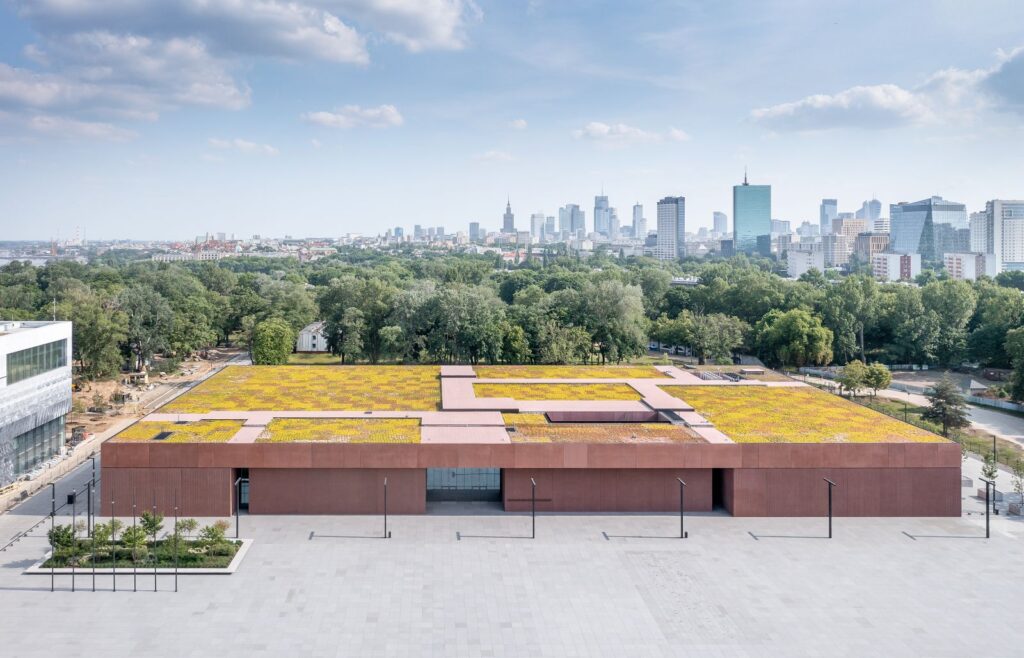Buro Happold and WXCA architects reinvigorate the historic Warsaw Citadel with new Polish Army Museum

The Polish Army Museum, designed by WXCA architects and with engineering by Buro Happold, opened in Warsaw on the weekend before 15 August 2023, marking the occasion of Armed Forces Day in Poland.
The project connects the history of the city, and the country as a whole, with the contemporary urban context. The museum site occupies 32 hectares of the Warsaw Citadel, a hilltop fortress built in the 1830s by the army of the Russian Empire.
The Citadel was used by the Polish military and has been a restricted area, until now. Buro Happold worked closely with WXCA to reinvigorate the site, which overlooks the Vistula River and is separated from the city by an embankment.
The Polish Army Museum building, together with the Museum of the 10th Pavilion of the Warsaw Citadel and the Katyń Museum, stands alongside the soon-to-be-built Museum of Polish History, collectively forming one of Europe’s largest museum complexes.
The Polish Army Museum project is part of Buro Happold’s extensive, ongoing engagement with the changing urban landscape of Warsaw. Over 25 years and multiple projects, Buro Happold’s Warsaw office has made a lasting contribution to the evolution of one of Europe’s most dynamic and exciting cities
WXCA’s design for the Polish Army Museum comprises two buildings, with the completed South Building to be joined later by a second building on the northern side of Gwardii Pieszej Koronnej Square, as well as the refurbishment of a number of historically listed buildings.
The South Building consists of eight blocks united by a shared green roof that echoes the natural environment of the surrounding park. The total area of the building is more than 12,000 square metres and provides exhibition space dedicated to the display of the museum’s permanent collection of Polish arms and also offers flexible space for temporary exhibitions and events.
The museum building is constructed from cast-in-place concrete, up to 7.5 metres in height. The façade is defined by a bespoke formwork pattern of chevrons that refers to military decoration, reflecting the site’s history over two centuries and its continuing close relationship with the military.
This pattern is repeated on the walls of the galleries and other interior spaces. The simple orthogonal volume of the South Building masks a complex technical infrastructure.
The technical requirements are integrated into the design, a relationship that required close collaboration between Buro Happold and WXCA. MEP functions are cast in the main walls, and the concrete ceiling and the roof provide a thermal mass that stabilises indoor temperature.
A low-energy system of year-round heating and cooling is created via a ground exchanger, comprising 91 vertical boreholes drilled to a depth of 150 metres, which work in combination with heat pumps. Buro Happold designed a new entrance tunnel, allowing for access from the Vistula riverside and through the embankment at the Citadel’s base.
A post-tensioning structural system minimises the amount of concrete required for the tunnel. A new entrance and recently designed footbridge further aid in circulation, intensifying the connections within the Citadel and creating new links between the Citadel and the city.
Location: Warsaw, Poland
Architect: WXCA
Engineering: Buro Happold
Client: Ministry of National Defence, Poland
Area: 12,000 square metres
Year: 2023
Photographs: Marcin Czechowicz, Courtesy of Send/Receive





